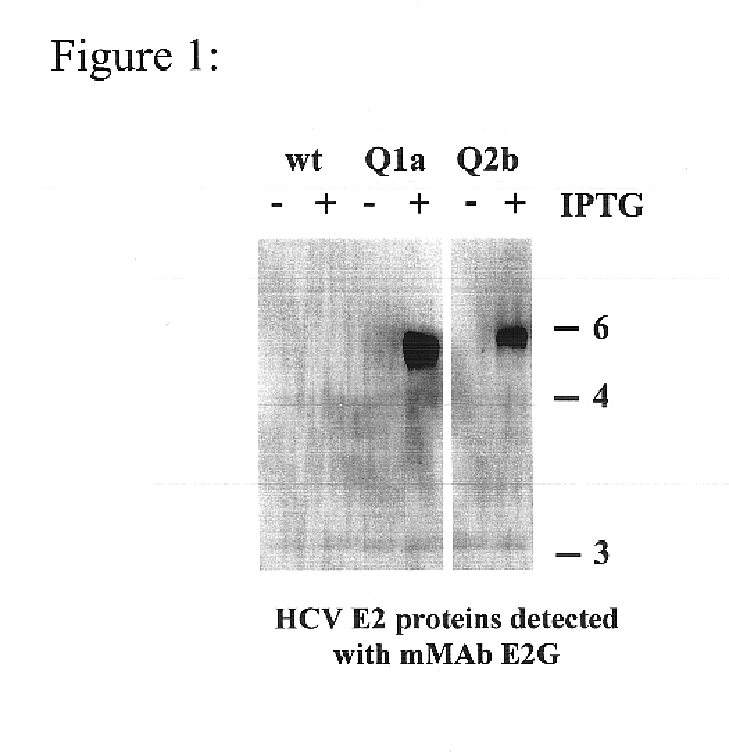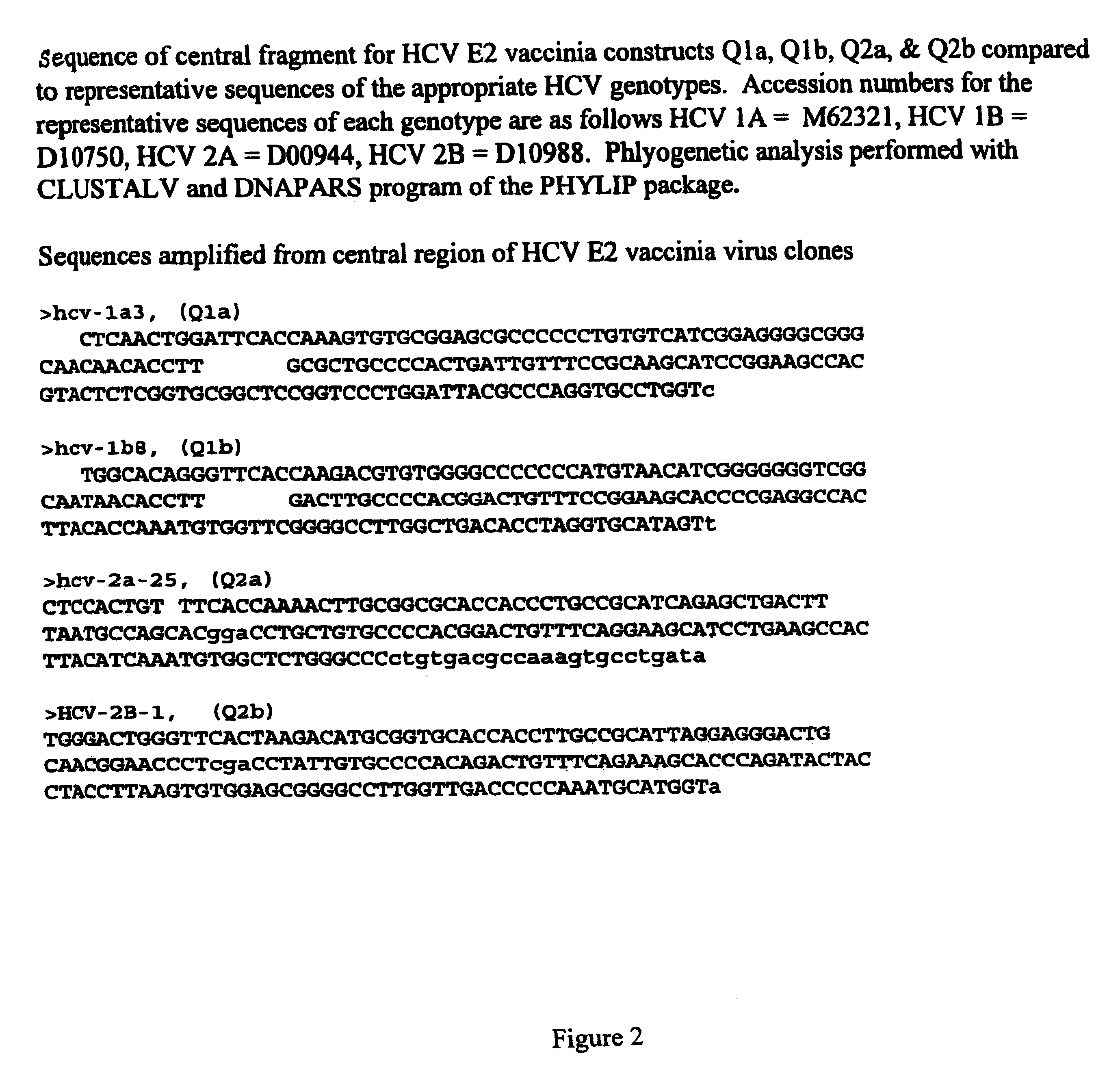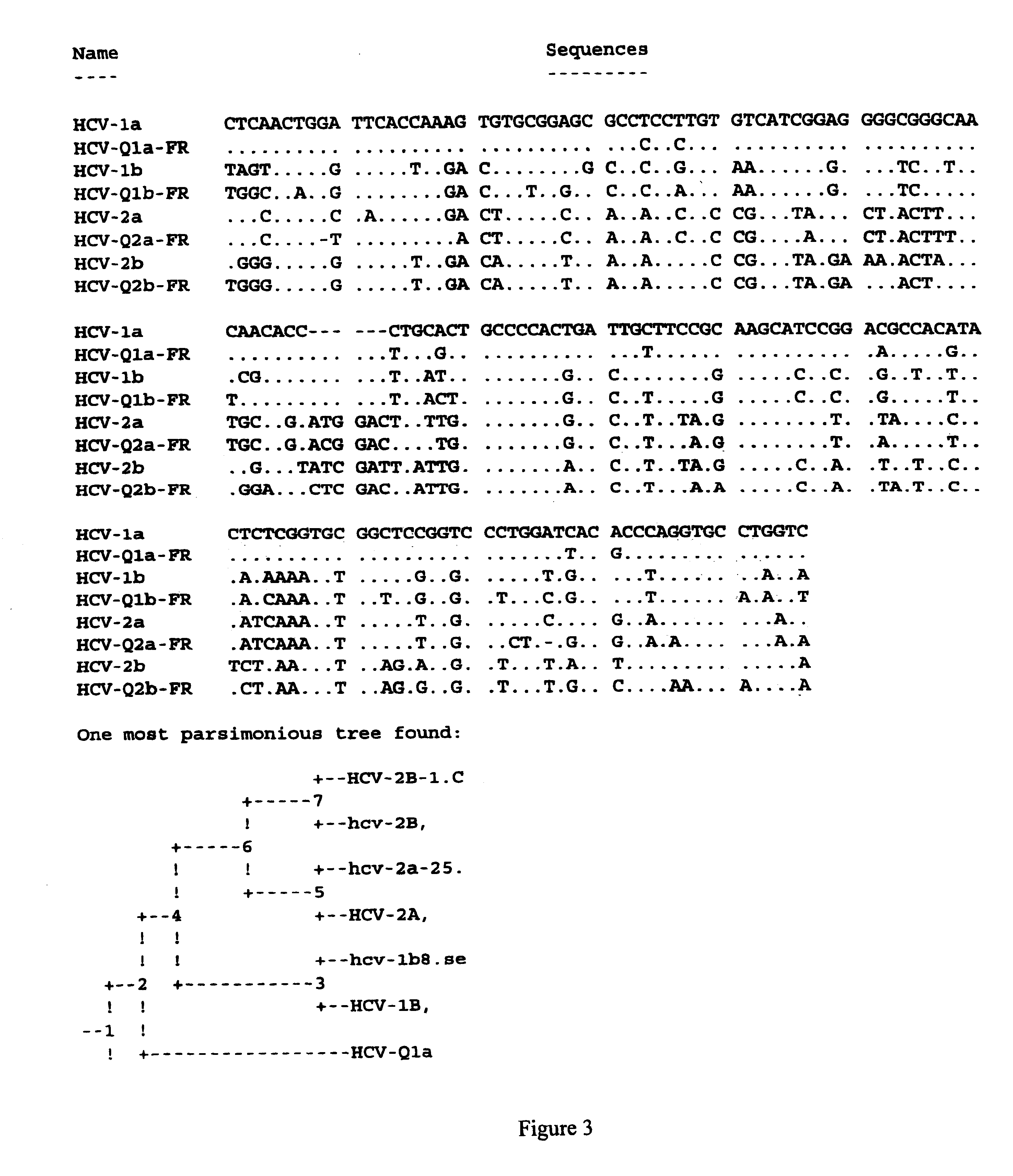Prevention and treatment of HCV infection employing antibodies that inhibit the interaction of HCV virions with their receptor
a technology of hcv and antibody binding, applied in the field of human monoclonal antibodies, can solve the problems of only being able to compare the effective antibody binding of these mimotopes, little is known about the conservation of epitopes, etc., and achieve the effect of reducing the viral load of infected individuals
- Summary
- Abstract
- Description
- Claims
- Application Information
AI Technical Summary
Benefits of technology
Problems solved by technology
Method used
Image
Examples
example 1
Production of HCV E2 Proteins From Multiple Genotypes in Vaccinia Virus
To analyze the reactivity of HCV sera and test the breadth of HCV-HMAbs reactivity, the complete coding sequence of HCV were cloned from isolates of HCV genotypes 1a, 1b, 2a, and 2b, were PCR amplified from HCV positive sera and expressed with vaccina virus using the pVCTE (Ward, et al., 1995 Proc Natl Acad Sci USA. 92:6773-6777) transfer vector (constructs Q1a, Q1b, Q2a, and Q2b for HCV genotypes 1a, 1b, 2a, and 2b, respectively). Genotype selection was based on its divergence and frequency among HCV infected individuals in the United States (Mahaney, et al., 1994 Hepatology 20:1405-1411). Oligonucleotide primers were designed to amplify fragments that expressed the final 39 amino acids of E1, all of E2 / p7, and the N-terminal 98 amino acids of NS2. See Table 2. (SEQ ID NOS: 18-27)
Accordingly, aliquots of plasma from individuals PCR positive for HCV RNA were obtained and genotyped using the InnoLipa HCV genotypin...
example 2
Antibody Screening of Potential HCV Positive B-cell Donors
Since HCV cannot be reliably propagated in vitro, it is necessary to use recombinant envelope proteins expressed in eukaryotic cells to identify-individuals with strong antibody titers to HCV proteins. In such screening it is necessary to use methods that preserve the native structure, of the envelope proteins thus allowing the detection of antibodies to conformational epitopes. In the identification of sera for the generation of HCV HMAbs an indirect immunofluorescent assay (IFA), was employed. This assay uses acetone-fixed cells and is analogous to methods used in the production of neutralizing HMAbs to conformational epitopes on human T-lymphotropic virus envelope protein (Hadlock et al., 1997 J. Virology 71:5828-5840). For HCV, acetone-fixed cells expressing HCV E2 envelope proteins were used. At various points the E2 proteins were expressed using recombinant baculovirus in SF9 cells, recombinant vaccinia virus in HeLa ce...
example 3
Production of Antigen-specific Human Monoclonal Antibodies
Peripheral B-cells were purified from donor T-cells by T-cell resetting as described (Foung et al., 1984 J. Immunol. Methods 134:35-42) which disclosure is incorporated by reference. Individual cultures of 1.times.10.sup.4 B-cells were EBV-activated in microtiter plates. HCV specific antibodies were detected with an immunofluorescence assay (IFA). Cells infected with recombinant vaccinia virus expressing HCV E2 proteins, recombinant baculovirus expressing HCV E2,and / or mammalian cell lines that have been engineered to express HCV E2 from their DNA were fixed onto HTC supercured 24-spot slides. The cells were fixed with 100% acetone for 10 minutes at room temperature. Fixed cells were incubated with undiluted culture media from EBV activated B cells or hybridomas for 30 minutes at 37.degree. C. and washed for 5 minutes with phosphate buffered saline (PBS), pH 7.4. Slides were then incubated for 30 minutes at 37.degree. C. with...
PUM
| Property | Measurement | Unit |
|---|---|---|
| volume | aaaaa | aaaaa |
| concentrations | aaaaa | aaaaa |
| temperature | aaaaa | aaaaa |
Abstract
Description
Claims
Application Information
 Login to View More
Login to View More - R&D
- Intellectual Property
- Life Sciences
- Materials
- Tech Scout
- Unparalleled Data Quality
- Higher Quality Content
- 60% Fewer Hallucinations
Browse by: Latest US Patents, China's latest patents, Technical Efficacy Thesaurus, Application Domain, Technology Topic, Popular Technical Reports.
© 2025 PatSnap. All rights reserved.Legal|Privacy policy|Modern Slavery Act Transparency Statement|Sitemap|About US| Contact US: help@patsnap.com



